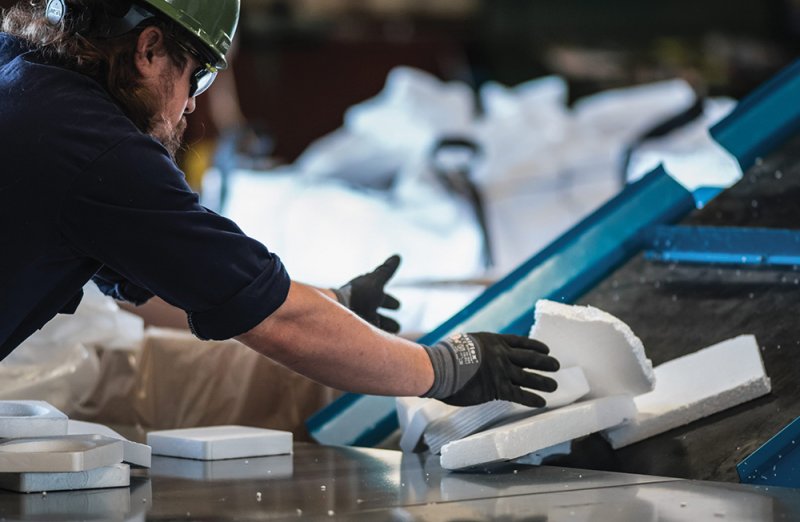 A Cyclyx worker sorts plastic waste. (Courtesy photo)
A Cyclyx worker sorts plastic waste. (Courtesy photo)
Since recycling facilities are designed to take only the highest quality plastic products, such as water bottles and milk jugs, less than 10% of all the plastics that are produced get recycled.
Cyclyx in Portsmouth is trying to change that with the opening of a new lab that is developing a database of the chemical characterization of various plastics waste streams—everything from artificial turf fields and carpets to municipal bales and manufacturing scraps—to understand the polymer recipes, the levels of contamination and the physical properties such as the melt point.
“The more sources of waste plastic we can identify and qualify for use in our processes, the bigger impact we can have on the recyclability of all waste plastics, and the closer we can come to our mission to help increase that number from 10% to 90%,” says CEO Joe Vaillancourt. “But the recycling industry has developed itself in a way that’s not responsive to that goal.”
As Vaillancourt explains, rather than each waste facility trying to find buyers, the database will allow material to be sourced from multiple facilities. “We are flipping the equation. If we can create a customized feedstock [recycled plastics that are used in manufacturing or refining of fuels], the recycling facility that supplies it is not one but could be upwards of five or 10. That means we can customize the preprocessing facility specific to the product they need and because we can figure out the recipe, we can then go source it.”
Vaillancourt says Exxon Mobil, for example, may need 100,000 tons of plastic to be used as raw material in their refineries, so, it may have to come from 1,000 different sources. “Because we’re sourcing them, we can select which thousand go into the mix, which go into that facility, so it actually allows us to create a customized system [and] not just a product for each of our downstream customers.”
There is even hope for so-called single-use plastics, which are produced at large volumes every year to help keep foods fresh.
“I’m not a proponent of plastics, and I think if the world could reduce the amount of plastic that would be great, but we are thinking about it the wrong way,” says Vaillancourt. “When you talk about a single-use application, people get outraged and I understand that. If we could take that single use and recycle it back to a single use 100 times with no degradation at a lower carbon footprint than virgin manufacturing, wouldn’t that be a more responsible approach to how we manage resources?”
For more information visit agilyx.com/cyclyx.

 Current Issue - April 2024
Current Issue - April 2024